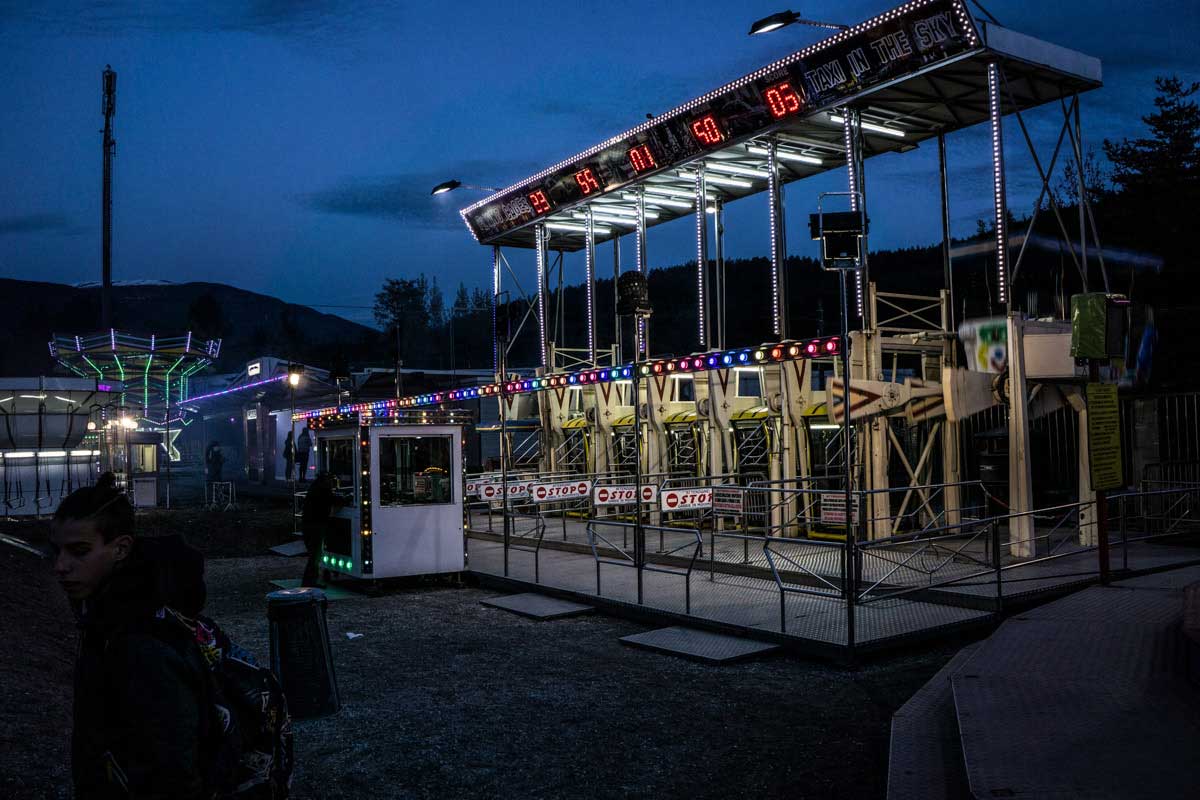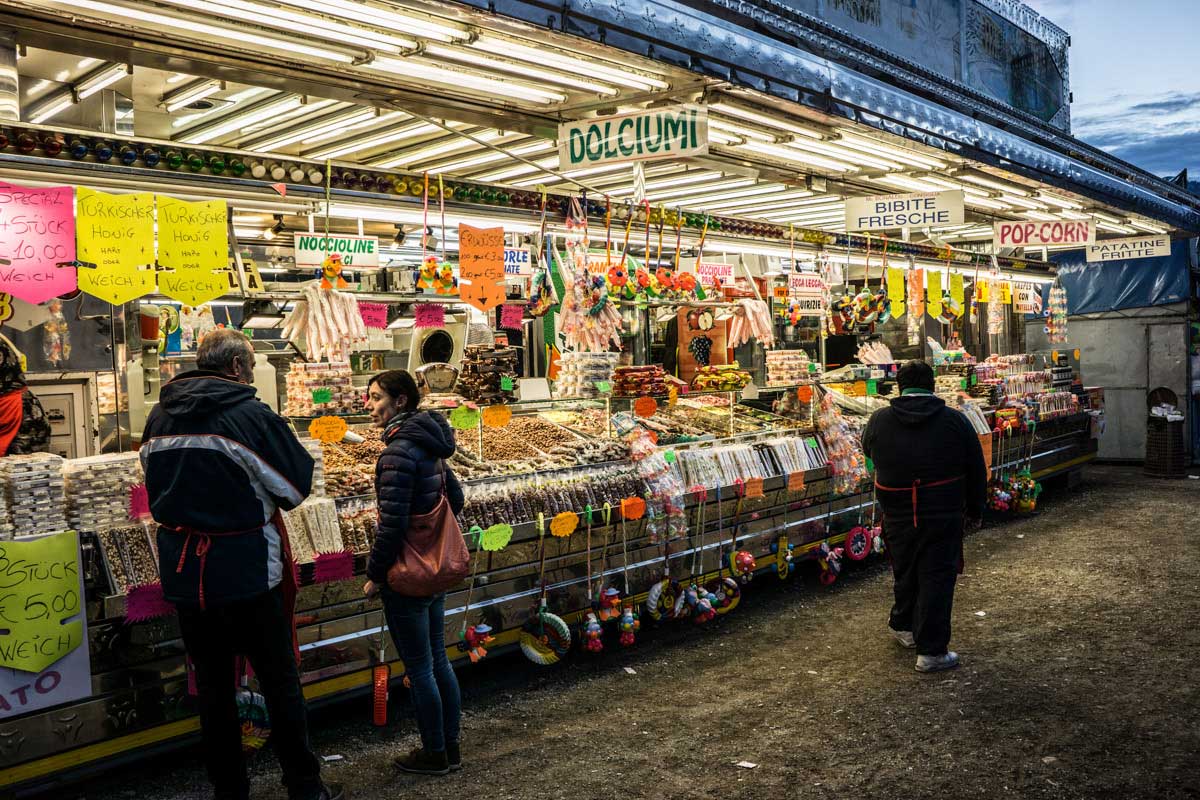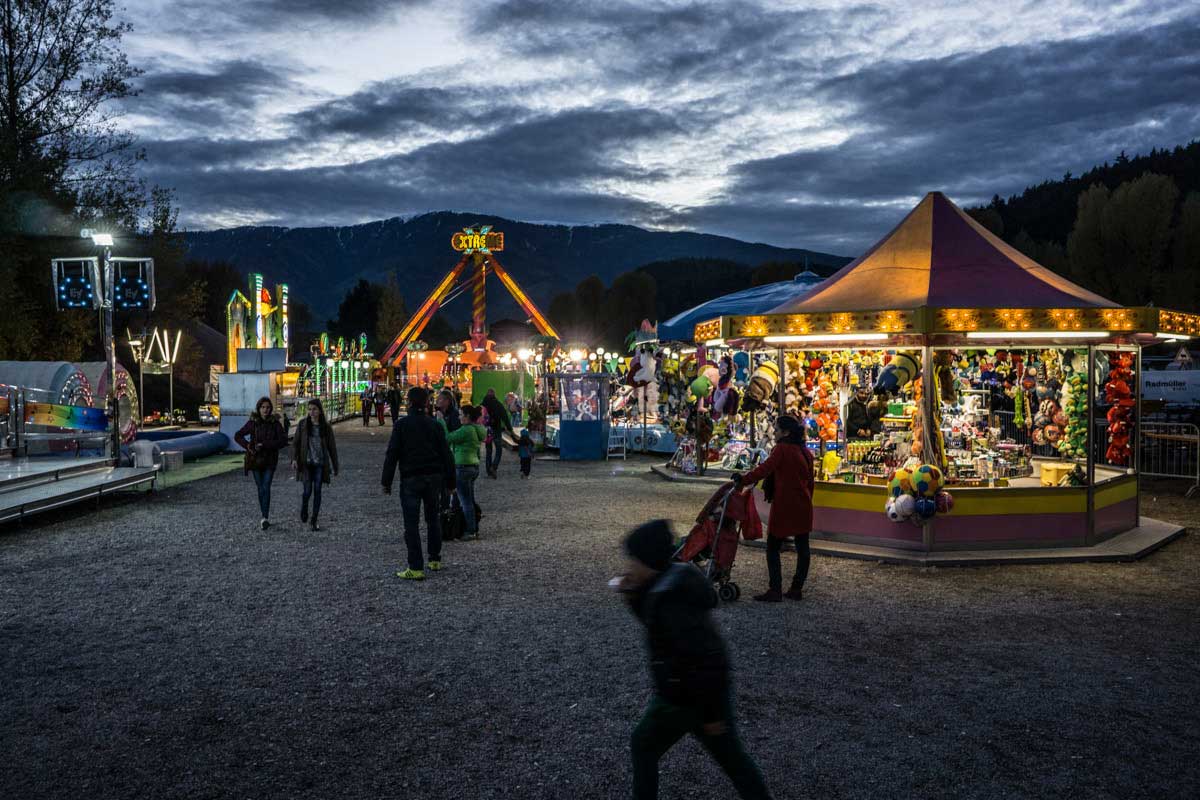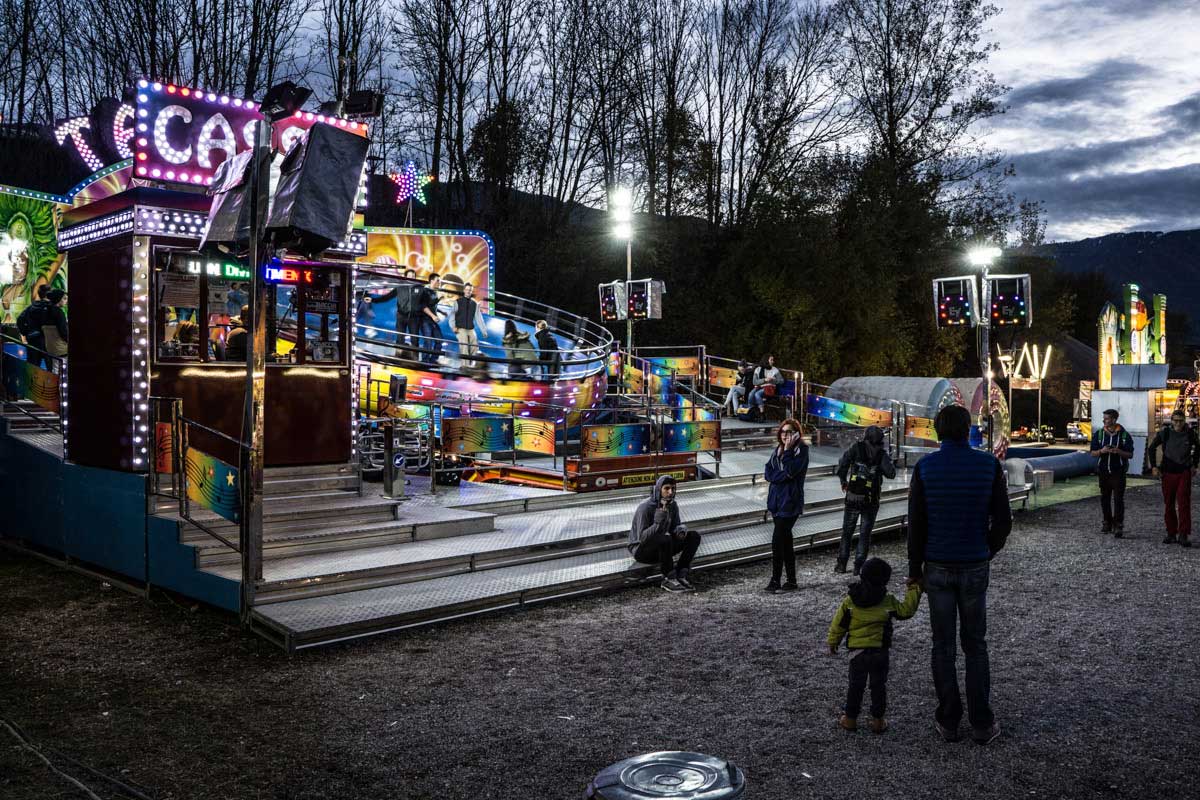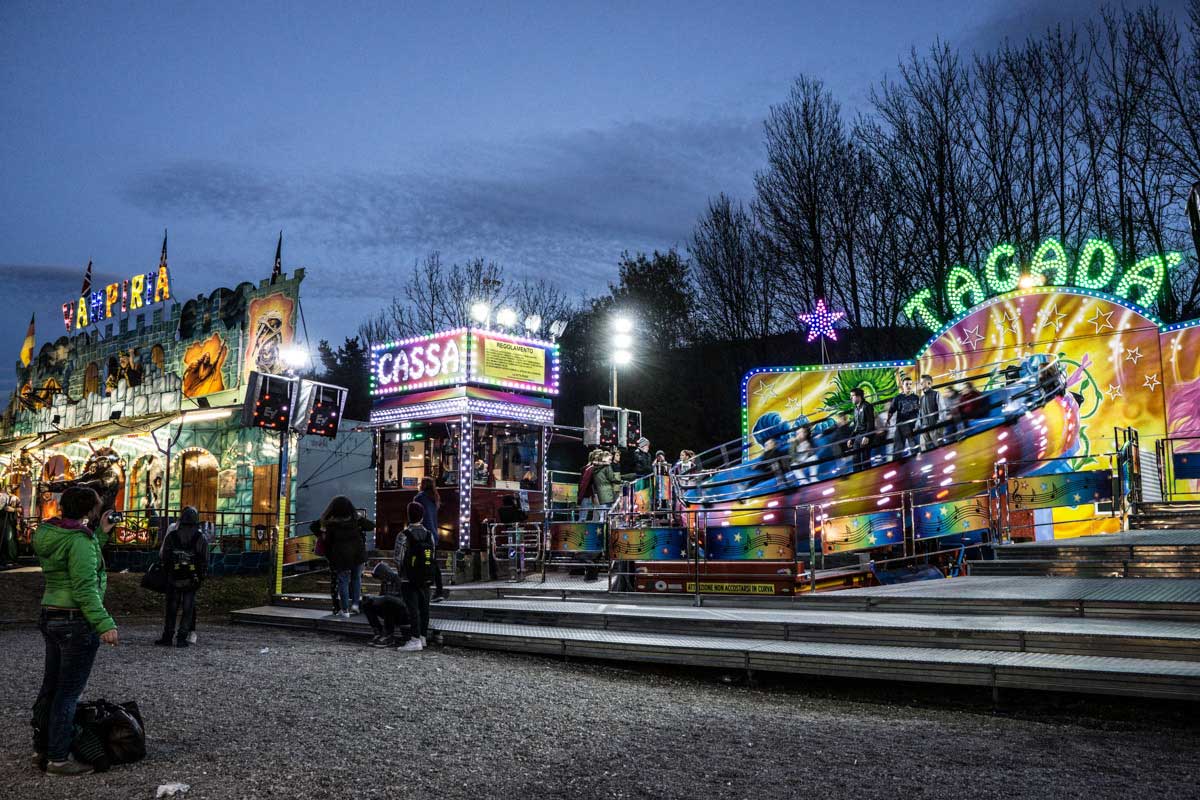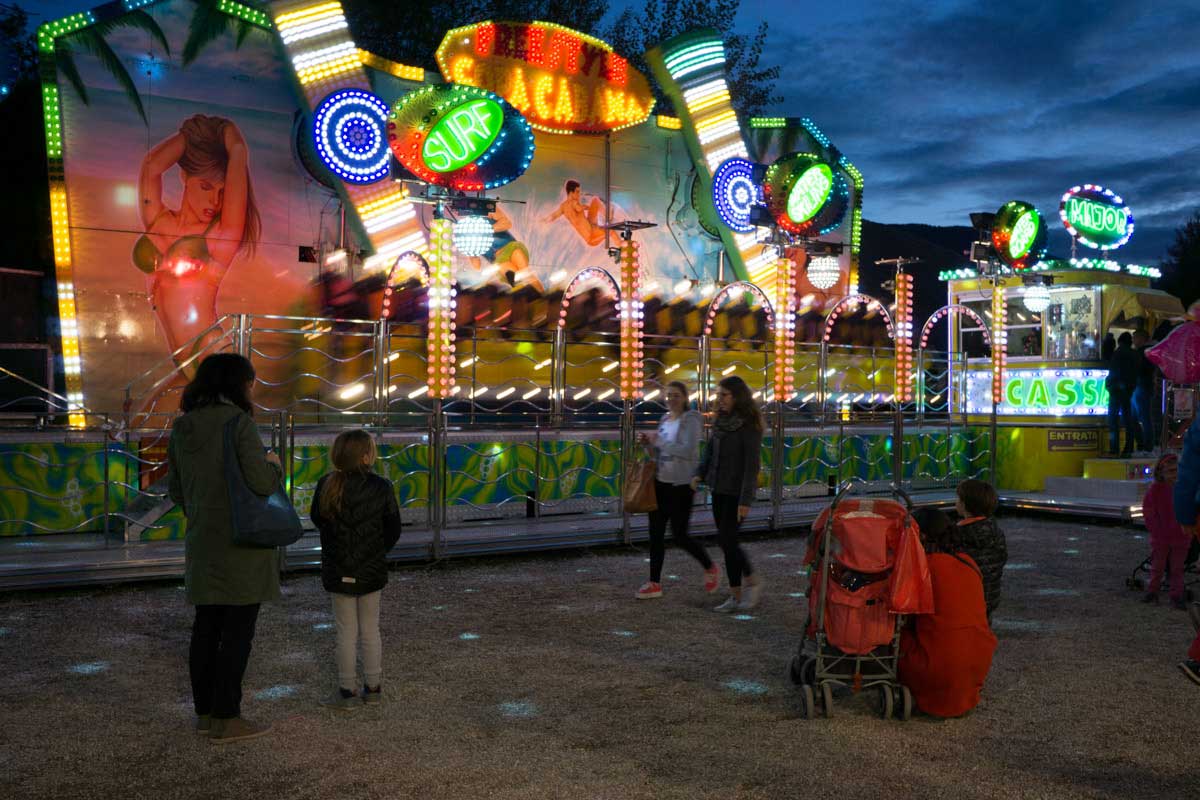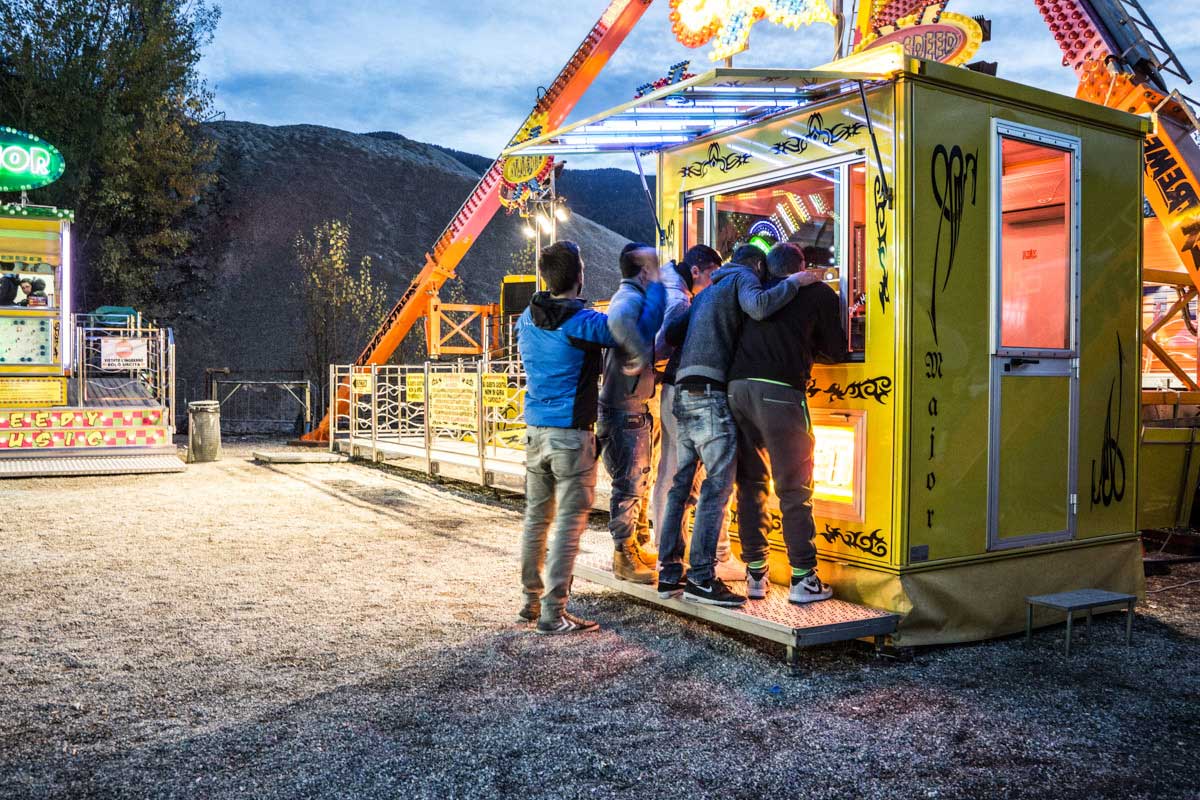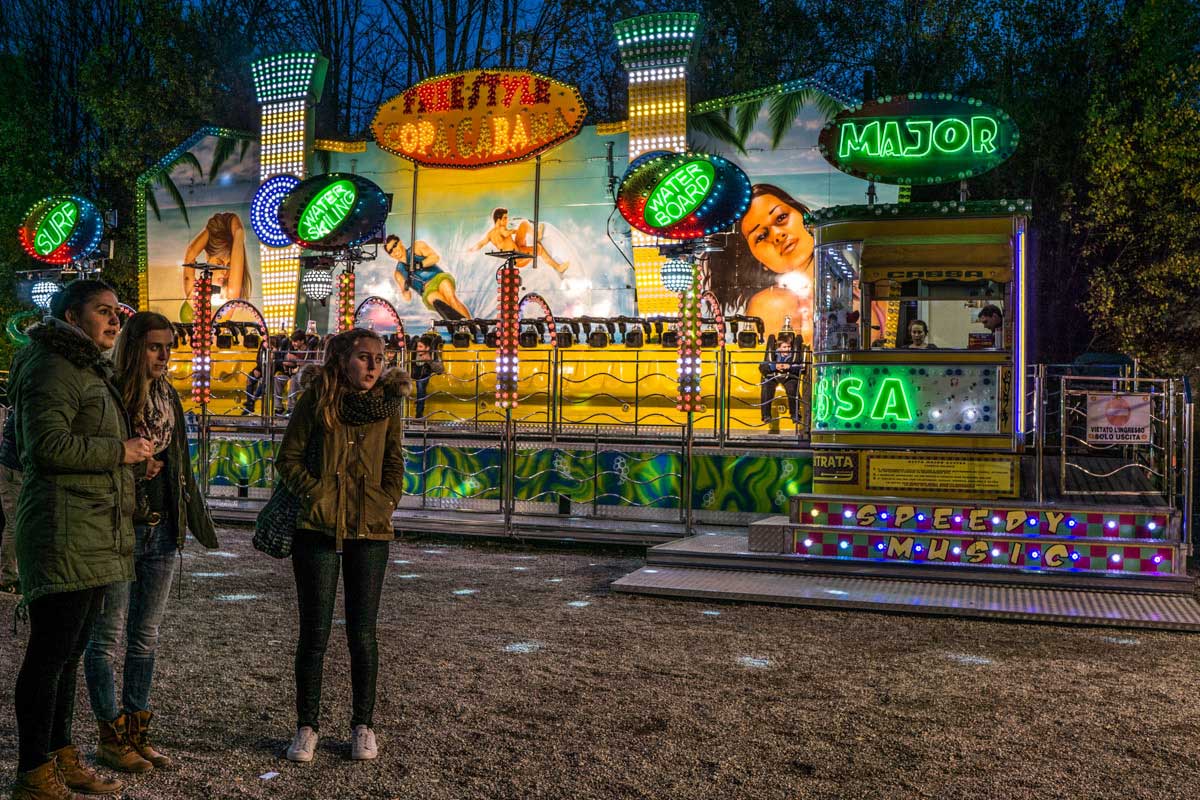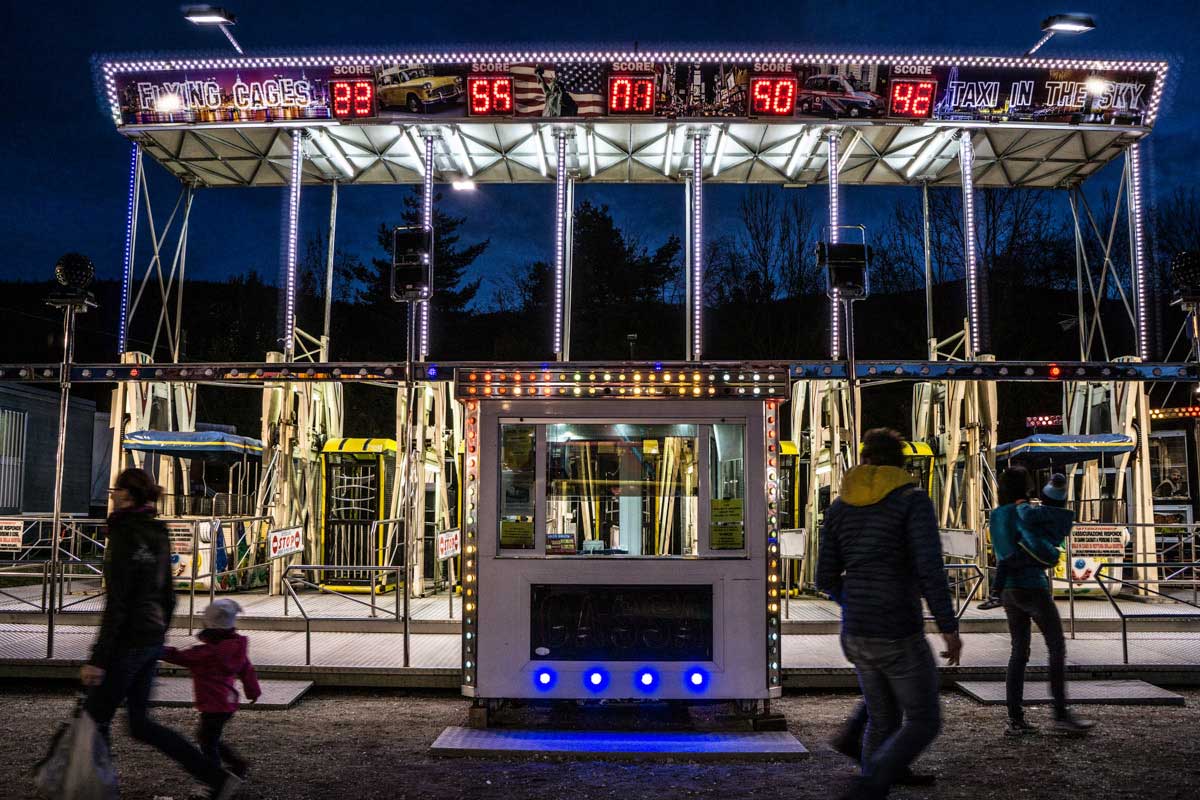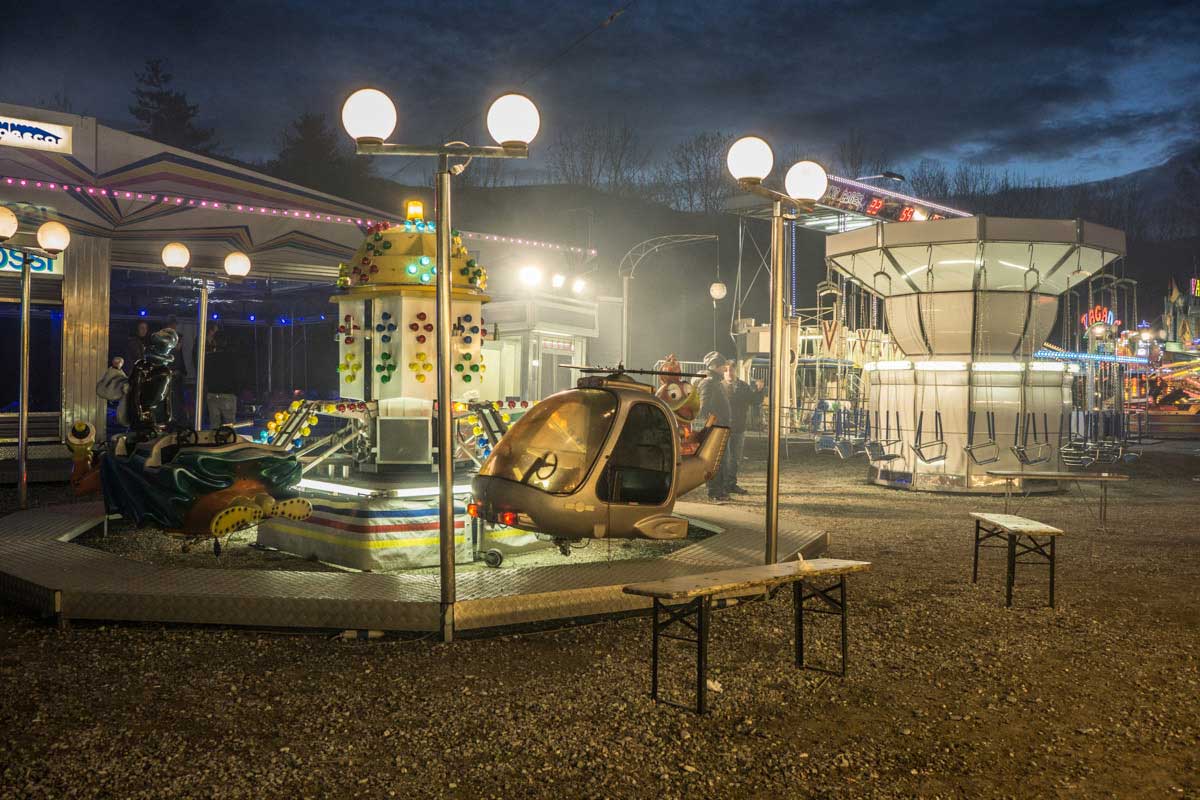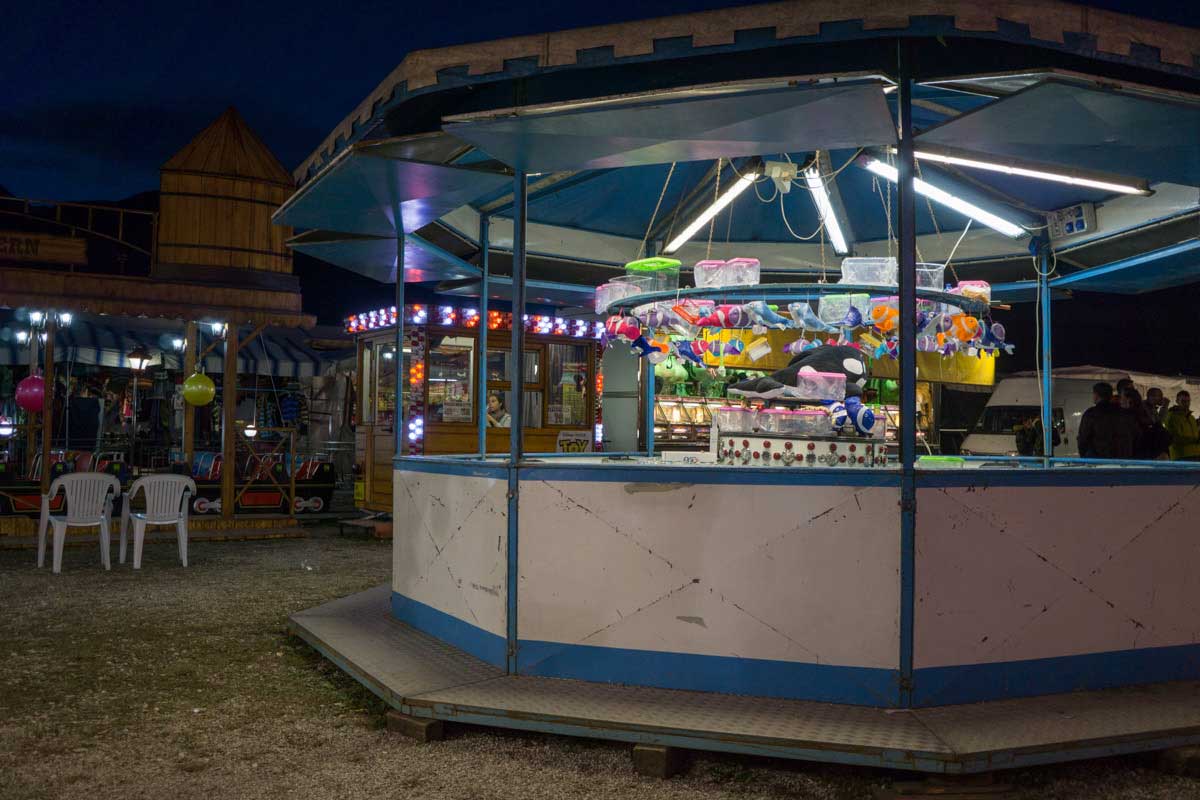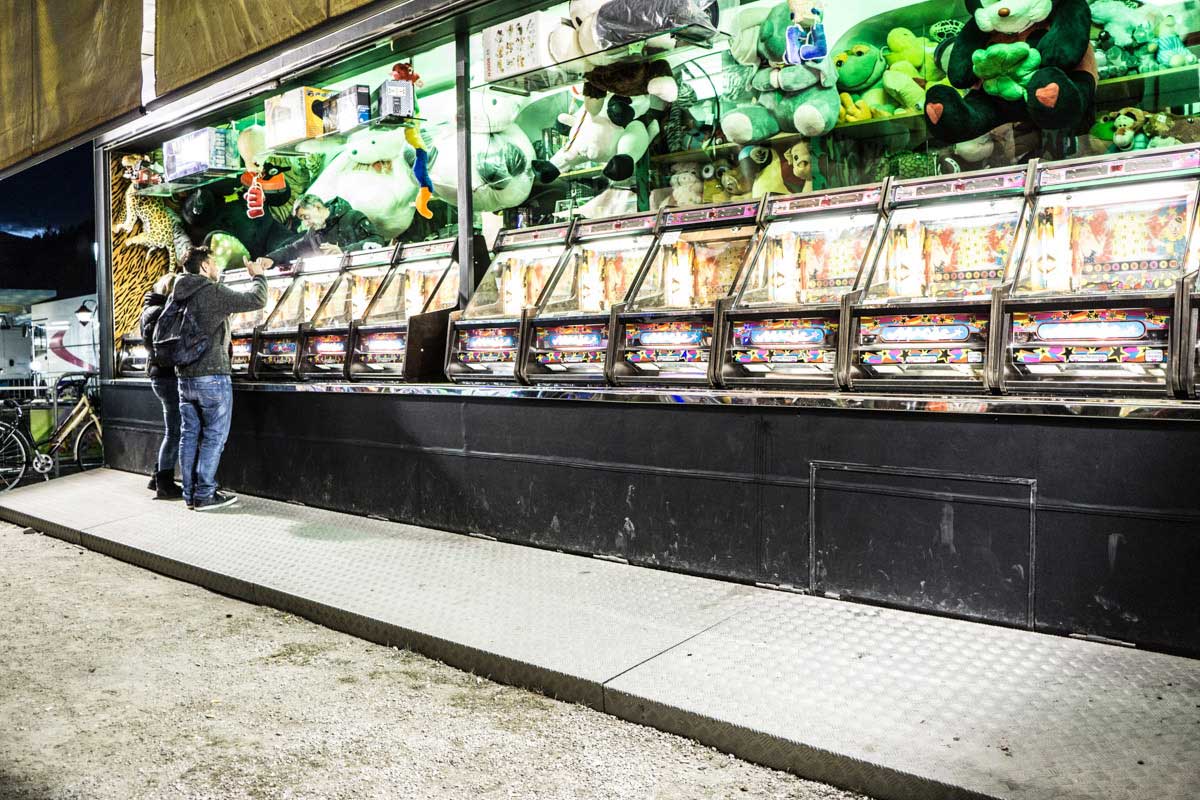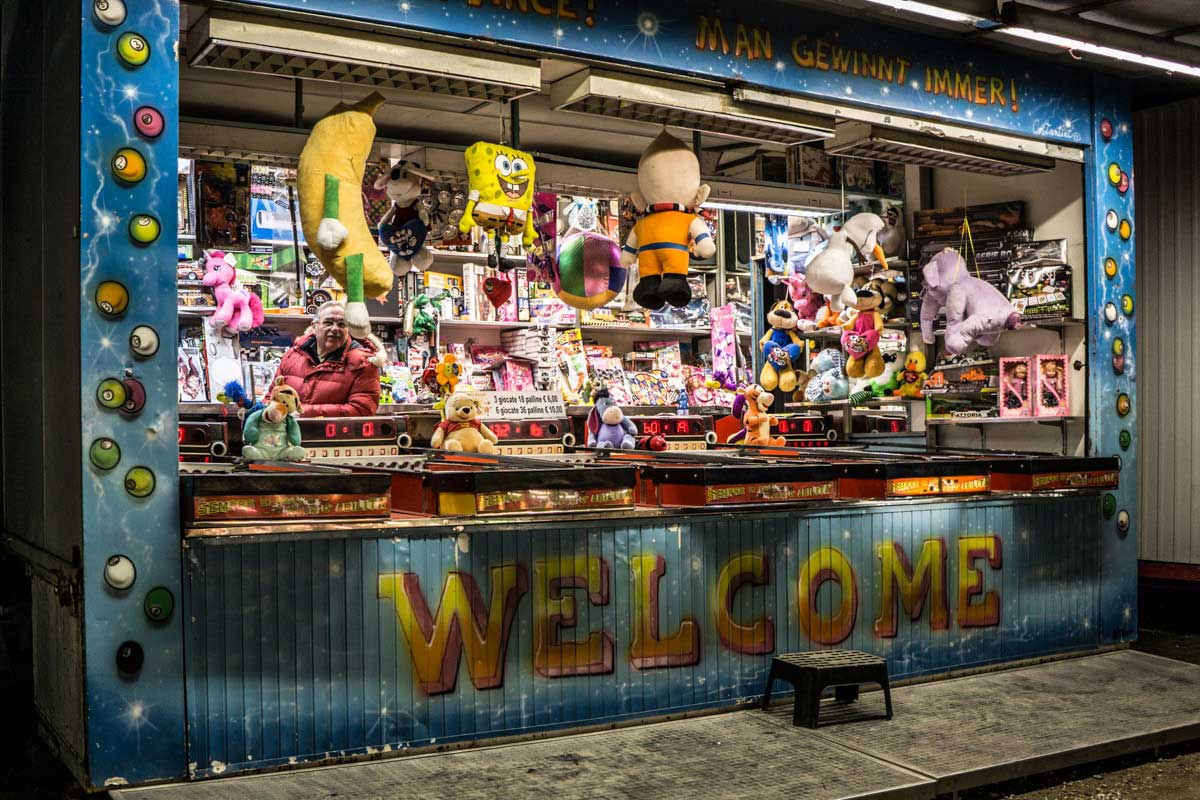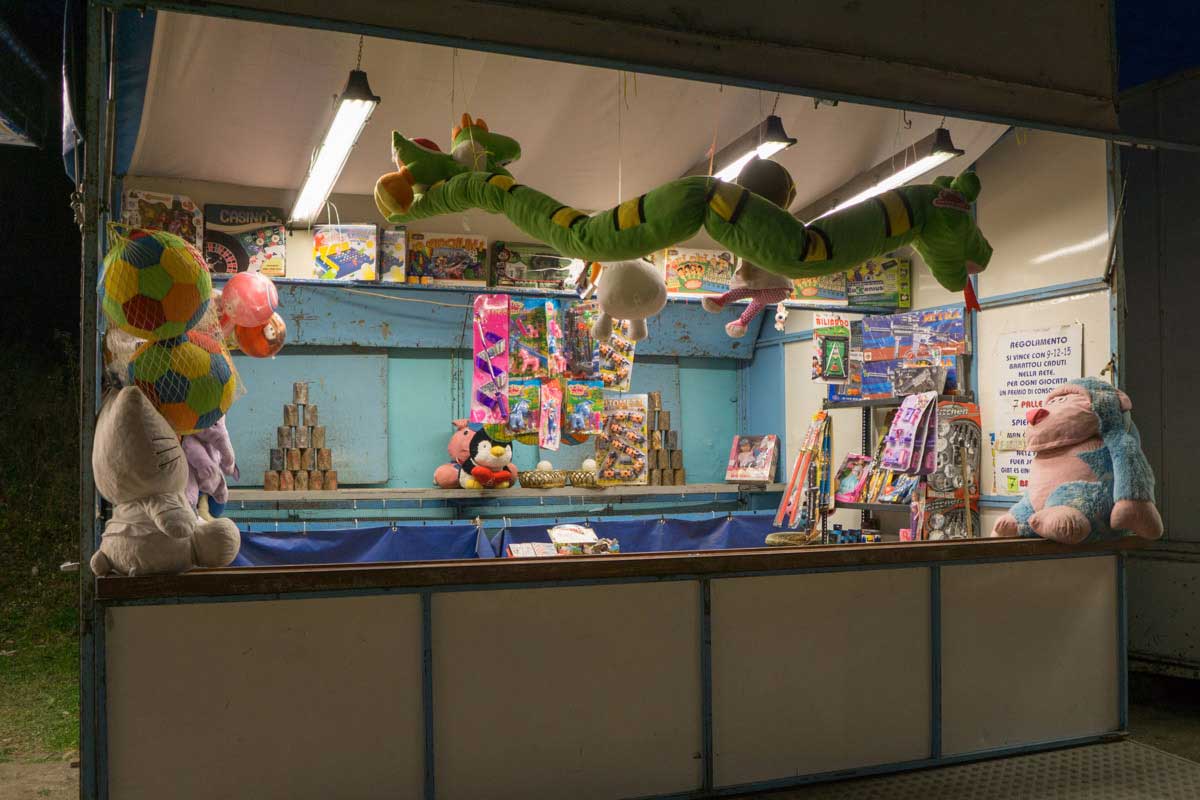Merry-go-rounds have been existing for nearly 400 years now – whether on the Oktoberfest, the Cannstatter Wasen or on Stegener Markt, a market nearby Bruneck, a small town in South Tyrol, close to the Austrian border.
Maybe also because to me it is repeatedly a kind of opportunity to prolong my youth. Every adult used to be a kid once. Fairground rides take me back to these good old days. And all of a sudden, I’m 15 or 16 years old again.However, longing for carrousels and whatever they stand for is a most present thing. Movies, books and paintings, postcards and posters that are repeatedly re-published as nostalgic replications tell of its most special allure.
Whoever wishes to experience the feeling of blissful spinning around, gyrating and the rest of the world disappearing outside Luna Park, just has to read out Rilke‘s famous poem from 1906 aloud. The carrousel is also known in the interpretation of dreams. It symbolizes memories of childhood and youth and expresses our longing for jollity, zest for life and easiness. To Margit Ramus, it stands for even much more: “Just like life itself, the merry-go-round goes in circles. Isn’t it nice if you find your track in life and follow it until things merge and you have happily achieved your goals”.
The story behind the fair
Tyrol’s most renowned annual fair goes back a long, long way. Despite its importance to the once very rural area, nobody really knows where it originated or how long it has been dating back.
Many people believe that Stegen Fair emerged out of local gatherings where court meetings were held and trade took place. One such court meeting day is verified to have taken place in “public placito” in the year 861 in St. Georgen an der Ahr. A little further downstream, toward the south, lies an open plain called “Alting”, which translates to “court meeting”. This is where the so called “Altingstein” (rock of Alting) is said to have been found, and where Stegen Fair most likely has its origin.
A long-standing rival to Stegen Fair once was Lorenzi Fair in Bruneck. Bruneck was declared a city in 1256 – and because a city needs a market, Lorenzi Fair was introduced. It took place during midsummer, which was a rather unfortunate date for such a rural area; and thus, Stegen Fair soon managed to outrank Lorenzi Fair.
Toward the end of harvest and alpine pasture time, in late autumn, there was more than enough demand for a market that would stretch across several days. The festival of apostles Simon and Judas on October 28th also serves as market day in other towns, such as Klausen. Stegen market was an important economic event, especially in the meat supplies sector. Puster Valley was leader in cattle sales for a long time. The opening of the railway line through Puster Valley (1871) also had a positive effect on the market.
The so-called “Stegena Morscht” (dialect for “Stegen Market”) was – and still is today, in its altered form – a significant tradition. Because it took place across three days, it later became a folk festival. Ever since the 26th of October was declared a national holiday, this date also marks the beginning of the market; and because it is so highly frequented, we speak of it as “Austria day”. The cattle market takes place on the second day, and the third is reserved for the so-called holiday, or people’s, market.
About Heinz Innerhofer
lives as a freelance photographer in St. Lorenzen, South Tyrol, Italy. Studied at ZeLIG, School for Documentary Film, Television and New Media in Bolzano, camera assistant for various documentary films for ORF, ZDF, SRF and RAI. Training as a bookbinder was followed by a few years as a photographic assistant in Munich. From 2001, freelance photographer and graphic designer. I completed a 5-semester course in artistic and representative photography at the Austrian “Prager Fotoschule”, with distinction.
Many exhibition projects at home and abroad incl. Ars Electronica Center Linz, Galerie Zebra Vienna, diz-muc Munich, Werft.Raum.Atelier Oberrieden/Zurich, Galleria Gallerati Roma, Galleria made4art Milano and Galerie Prisma Bolzano, sometimes in combination with contemporary music with e.g. Christina Auer and Eduard Demetz. Publications in various international photo magazines and prize winner of e.g. the Gold Medal at the International Trierenberg Super Circuit, the Silver Medal at the TIFA Tokio Photo Awards, 3rd prize at the off-festival vienna, Honorable Mention at the IPA International Photography Awards Los Angeles, Honorable Mention at the MIFA Moscow, International Photography Awards and Finalist at the International Photography Awards di Siena.
Invitations followed to international photo festivals such as Milano PhotoFestival, international photo festival Lishui China, Orvieto FIOF Festival Internazionale della Fotografia, off-festival vienna and R-evolution Summer Festival Barletta. [Official Website]



